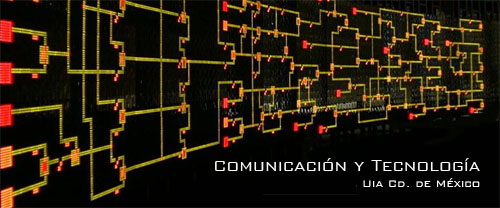(Tema 1.3, ver programa)
"We Document the World" (Xerox)
"Representations are only a technological necessity" (Gitelman, 119)
+ New Media Bodies
- Card Stock Example (US Court, O'Brien, 1st Ammendment): The point of the Selective Service card: meaning and materiality are mutual and not distinct.
- "Their primary instrumentality had to do with their mysterious (that is, illegible) patterns of holes" (92) ---- Users needed to know the code.
- Relations of Power [Lewis Mumford, The Myth of the Machine: The Pentagon of Power ---- a metaphoric megasystem]
- "New media can be potent, embodied versions of unsettlement" (93) ---- logics of representation ---- when and how is it ordered?
- Inscriptive vs. Uninscriptive
- [Lev Manovich: digital media are characterized by numeric coding and modular representation]
- Digital: Information as an increasing quantity
- Analog: Information as a constatnly shifting and repatterned feature
- Vannevar Bush: Organize documents by "associative indexing", through "an intricate web of trails", hipertexto; MEMEX desk operated at a distance. Shared ownership of a public record.
- Licklider: Libraries of the Future: Procognitive Systems, where "information can be separated from its natal body without significant loss" (100). Definition of the Information "Corpus". Document similar to Record. Licklider Documents: Type and Token. "Documents have something of a synecdochic function: documents are not unique artifacts (his tokens); they are representative ones" (103)
- Texts are "ordered hierarchies of content objects on which markup strategies are premised"
- Where is the importance of a document?
+1968-1972: Networking
- ARPANET: [Paul Baran; RAND Corporation; DARPA -2002- Information Awarness Office]
- Recursive Public: "A form of social imaginary through which a group imagines in commons the means of its own association" (108)
- ARPA-RFC-Request for Comment; Steve Crocker, write without "authorative" constraints, "informal" dissemination [Comunidad: Formaciones digitales, Sassen y Latham]
- Interlocking layers from which standards and protocols are born or emerge
- Echoing: "situation where the console, a peripheral processor or some very low software,m echoes the character (or line that is) entered" (111). That is, different nodes functioned differently [Albert Lazslo Barabasi; Ian Bogost]
- Licklider: Intermedium - Interface: Plane of separation between man and machine [Ian Bogost Simulation Gap].
- Scenarios are self-consciously marked up: typographic cues that distinguish different content (Example: 116). "Reading it (mark-up) would involve parsing its typographic reproduction from the typographic context of its reproduction"
(116) - Identifiable as documents because of their importance - meaning - to the network of users.
"The qualities of books as physical bodies formed a subject of public debate" (118)+ New Media
- The Internet of 1854: symptomatic incoherence
- Distilled Images: "intensely labored point of contact between the present and the past, a collision and an overlap of different times and formats" (124)
- The last recently modified web page
- [CERN & Tim Berners Lee]
- What is the Web's temporality? ---- Publication, public & the Public Memory ---- Transfiguration of the symbolic.
- Lev Manovich: "page as a basic unit of data organization".
- Page & Document: "One is an issue of format, and the other is an issue of concern" (128)
- History: putting narratives about events together, based on interpretation of the indexical survival (fragmentary) of the record and of the past.
- Error: File not Found ---- Change itself is a paradoxically consistent feature of the WWW ---- Users to Users [Sassen y Latham, figuration of mediating cultures]
- Error: Incorrect Formatting ---- The simple mechanics of standing remain in question ---- Public discourse indexes itself temporally ---- circulation organized as a continuous non punctual
- The Way Back Machine @ The Internet Archive
"Connection between publication and events-made-public is not transparent but is crucial to the experience of media in time and therefore in history" (138)
- The Web represents time and simultaneously produces temporalities for its users; it records and performs. TV Liveness (exógeno) vs. Web Real Time (endógeno), ambas son construcciones intricadas.
- Error: Private and Public. Called into public by "the act of linking". Interpolate present into a speculative future; Private & Public coexist and merge at times; Singularity, plenitude, and instantaneity of its interpretative space. "Emulation works as a preservation strategy in part because it helps self-consciously to underscore the differences between pages and documents -that is, between issues of format and matters of concern" (147)
- The H-Bot & the Internet of 1854
- Record & Document only make sense in the word "forever"....[Asimov] or is it Posterity?
- Media & Orders
"Production is indeed historiography's quasi-universal principal of explanation, since historical research grasps every document as a symptom of whatever produced it" (Michel de Certeau)

